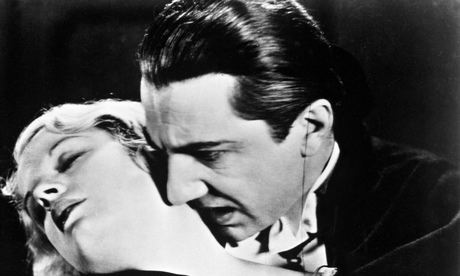
When Bram Stoker penned Dracula in 1897, Eastern Europe was still remote for most Britons. But Jonathan Harker's tortuous overland journey to Transylvania would today be a short hop on a budget airline. And Count Dracula, as both a Romanian immigrant and wealthy foreign plutocrat, would be attacked on arrival first by the Daily Mail for taking our jobs, and then the Guardian for forcing up property prices in the capital.
The fear of foreigners that fuelled Dracula is nothing today but a tabloid scare story, putting it alongside the other great fear of Victorian society – sex – which has also been reduced to mere page filler. Mina Harker doth protest too much when the sexy Vlad Dracula turns up in place of her dowdy solicitor husband. Today's horror heroines, like vampire hunter Anita Blake, are just as likely to screw a vampire as slay them.
Many horror fans were themselves horrified when novels by Laurell K Hamilton, Charlaine Harris and other women writers blew more traditional horror off bookshop shelves in the early 2000s. The horror boom of the 1980s that gave us Stephen King and Dean Koontz was something of a boys' club. Now urban fantasy and paranormal romance have rewritten the rulebook, transforming a genre that once turned on repressed sexuality into one where even a were-leopard threesome is no longer transgressive.
Serial killers are certainly scary, but should they be glamorous? The Shining Girls by Lauren Beukes takes the serial killer back to his nasty little self in the character of Harper Curtis. As the reviewer Julia Keller remarked, Beukes makes the novel's time-travelling killer "greedy, seedy and opportunistic" rather than "scintillatingly brilliant and alluringly damaged", whereas the latter qualities are all too often given to serial killers in horror stories such as Silence of the Lambs or television's Dexter.
Serial killers are rare, but male violence against women is still an everyday horror. Harper Curtis, like all men who predate on women, is a fundamentally weak creature. But in showing how that weakness manifests as violence, The Shining Girls produces far more visceral fear than stories which glamorise the murderer. In The Shining Girls, Beukes does what the best horror fiction always strives to, making its central supernatural horror a metaphor for the commonplace fears of everyday life.
Many men fear that, when tested, they will prove to be monsters. That this is a fear too little discussed makes it a powerful theme for Joe Hill's Heart Shaped Box. Ageing rock star Judas Coyne buys a ghost on the internet and is caught in a haunted house horror. But the farmstead that Coyne has made his mausoleum was haunted long before the ghost arrived, by the musician's own violent history with women. At least that is the suspicion we carry in Heart Shaped Box's opening scenes.
The beauty of Hill's debut is how, through the supernatural metaphor of a haunting, Heart Shaped Box dissects the complex causes of violence against women. Coyne starts the story as the kind of man who dates strippers a third his age then throws them out when he is bored. But as the story unfolds, Hill shows us – without making excuses – how Coyne is also a victim of a violent culture; a man who tried to help a young victim of abuse and is victimised by her abusers for his efforts. Coyne discovers he is not the monster he feared he might be.
Few people have faced hauntings, battled with serial killers or gone to bed with a vampire. But we're all faced at times with emotional or physical violence, and with our own complicity in that violence. We've all had to deal with people who are monstrous and vampiric, or feared we might ourselves be monsters. That's a true fear. And it's when horror takes us to the human causes of such fear that it is at its best.

